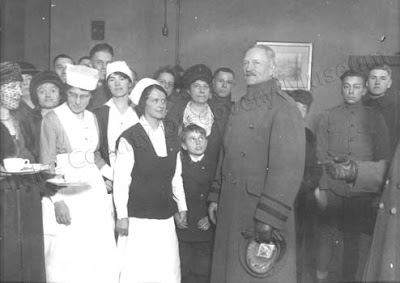Some believe the protests were rooted in the 1953 "Indian termination" policy passed by the U.S. Congress, which eliminated most government support for Indian tribes and ended protected trust status of Indian-owned land. This was followed by the Indian Relocation Act of 1956, designed to encourage Native people to leave Indian reservations, acquire vocational skills and assimilate into the general population.
Native Americans moved to urban centers in five original relocation cities: Chicago, Denver, Los Angeles, Cleveland, and Seattle, and were to receive assistance from the Bureau of Indian Affairs (BIA) with housing and employment. Many struggled to adjust to their new surroundings, and faced unemployment, low-end jobs, discrimination, and the loss of traditional cultural support.
Since Illinois did not have a large in-state reservation, Native people from tribes throughout the country came to Chicago. When the relocation began approximately 8% of Native Americans lived in cities. As of the 2000 census, that number climbed to 64%.
 |
| Original sign for the American Indian Center, Chicago, circa 1953. Online photo. |
In 1953, the American Indian Center (AIC) of Chicago was organized by the Chicago Indian community. For fifty years the AIC has been the principal cultural resource for Chicago's Native Americans.
The Chicago American Indian Conference was held at the University of Chicago in 1961, attracting hundreds of Native people from across the country. As a result of the conference, a Declaration of Indian Purpose was created which in turn helped to mobilize a generation of Indian activists.
In 1970, the Chicago Indian Village (CIV) emerged to fight for better housing for the city's urban Native American population. The CIV's protests began when a Menominee woman was evicted from her Wrigleyville apartment. This eviction led the group to a two-month encampment at a Wrigley Field parking lot.
The Chicago American Indian Conference was held at the University of Chicago in 1961, attracting hundreds of Native people from across the country. As a result of the conference, a Declaration of Indian Purpose was created which in turn helped to mobilize a generation of Indian activists.
In 1970, the Chicago Indian Village (CIV) emerged to fight for better housing for the city's urban Native American population. The CIV's protests began when a Menominee woman was evicted from her Wrigleyville apartment. This eviction led the group to a two-month encampment at a Wrigley Field parking lot.
From 1970 to 1972, community organizer Mike Chosa of the Chicago Indian Village planned seven encampments throughout Chicagoland. Two encampments were held in Lake County: one outside the main gate at Fort Sheridan, and another at Camp Logan in Zion.
The goal of the protests was to generate leverage with government agencies to address inadequate housing and social services for Chicago's 16,000 Native American citizens. A fact sheet prepared by the Chicago Indian Village stated that the Indians in the encampments "are not welfare cases: they are working people."
The Chicago Tribune wrote on January 3, 1972: "Thirty Indians protesting substandard housing conditions yesterday erected teepees outside the main gate at Fort Sheridan that could cause huge traffic jams today." The activists also carried signs protesting the Vietnam War.
 |
| Chicago Indian Village encampment outside George Bell Gate at Fort Sheridan, January 1972. BBDM 92.24.1378 |
Similar encampments were held across the country most notably at Alcatraz Island by a group known as Indians of All Tribes (IAT) from November 1969 to June 1971. The IAT pointed to 19th century treaties that stated abandoned or unused federal land would be returned to the Native people from whom it was acquired, hence their occupation of Alcatraz.
About the same time as the Fort Sheridan encampment, the protesters secured "a winter home" at Camp Logan in Zion where they remained until June 29, 1972. They then stayed at the United Methodist Church in Winthrop Harbor until accommodations were made for them with the Milwaukee Indian Action Group.
By the summer of 1972, the momentum behind the Chicago Indian Village was exhausted and the group eventually dispersed.
 |
| Chicago Indian Village encampment at Camp Logan barracks, Zion, Illinois, April 12, 1972. Photo by Joe Kordick. BBDM 2011.29 |
By the summer of 1972, the momentum behind the Chicago Indian Village was exhausted and the group eventually dispersed.
- Diana Dretske, Curator ddretske@lcfpd.org


































